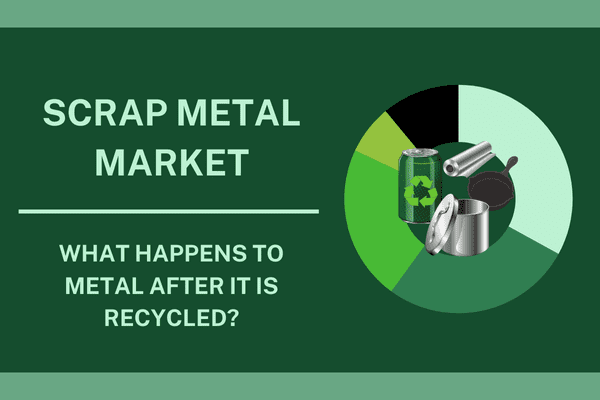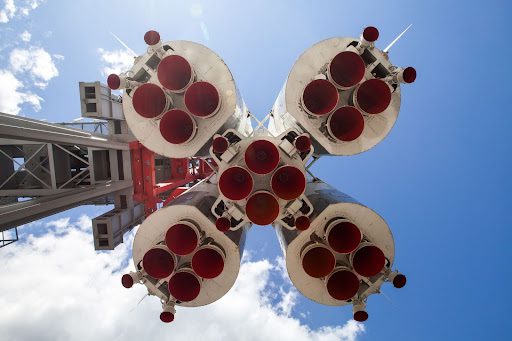
As the global economy continues to grow, production has ramped up on major construction projects. And there’s been a growing recognition of the important economic contributions made by the scrap metal recycling industry.
Those benefits include the jobs being created and the taxes paid to communities and states hosting recycling firms. With a continued demand for metals for new construction projects, the ability to use industrial scrap metal recycling for those projects helps considerably to hold down costs.
And that means demand for recycled metals is on the rise, which is why industry analysts are now forecasting that the global scrap metal recycling market will grow to a whopping 997.9 million metric tons by 2021.
In part, this reflects a heightened knowledge worldwide of the benefits of scrap metal recycling. Using recycled scrap, for example, offers great environmental benefits.
In fact, scrap metal recyclers are increasingly recognized as one of the oldest environment-friendly fields, one that’s helped foster a healthier environment and preserved and protected natural resources by keeping scrap out of landfills. Scrap metals contain toxin chemicals that pose dangers if exposed to the soil and groundwater close to those landfills.
So a thriving economy and heightened environmental awareness is likely to produce strong growth in the field of scrap metal recycling in the next few years.
What is driving demand for recycled scrap?
Analysts say a number of factors are involved.
When analysts from the research firm Technavio looked at the global scrap metal recycling industry, with the aim of projecting how the industry would grow from 2017 to 2021, they concluded that this industry would experience an annual growth rate of more than 3 percent.
Technavio’s study highlighted several factors contributing to the industry’s growth. They include:
• Growing demand for commodities in developing countries, with a higher demand for more goods and services being delivered.
• An increased awareness across the globe about the benefits of scrap metal recycling, from environmental benefits to economic ones, including job creation.
• A transition in the automobile sector, with automakers responding to changes in consumer sentiment, as the automotive sector shifts toward manufacturing cars that are cleaner, safer, and lighter.
As Technavio noted, consumers across the globe are pushing the demand for more automobiles and consumer electronics, which is helping to ramp up production of both. That, in turn, has led to a higher demand for recycled metals from manufacturers.
The use of recycled metals is economically more feasible for these manufacturers, since the alternative would be the far costlier effort of having to go mining for virgin ore to create new metals. Mining for ore also uses up far more of our natural resources and is far less environmentally-friendly than recycling.
In fact, environmental factors are a key reason why the scrap recycling sector is growing so quickly. As Technavio noted in its report, more and more manufacturing companies want to establish procedures that contribute to a cleaner and healthier environment, and they’re recognizing that using recycled metals helps them do that.
Manufacturer compliance to environmentally friendly manufacturing procedures is driving the demand for scrap metal recycling.
Will environmental concerns remain prominent?
Using recycled metals is increasingly recognized not only as a way to cut down on costs during the production process, but also as a way to adopt environmentally-friendly manufacturing procedures. It’s been well established that scrap metal recycling prevents pollution by keeping scrap out of landfills. There are plenty of other environmental benefits associated with scrap recycling, including:
• Helping to preserve natural resources
• Reducing energy costs
• Protecting our air emissions
For example, with the automobile sector, there has been a shift toward manufacturing lighter cars that are cleaner and help reduce carbon emissions. These lighter-weight vehicles also are highly fuel efficient, another contribution to the environment. And manufacturers are eager to use recycled metals, which is adding to the growth within this industry. The scrap metal recycling industry truly has created a sustainable environmental model for others to follow and emulate.
There’s also been a recognition of the industry’s many economic benefits. The scrap metal recycling industry supports jobs at higher income levels. Millions in taxes have been paid to states from these companies.
And as the industry continues to grow, that means there will be more jobs, and tax revenue, to be had this year and in future years.
The Institute of Scrap Recycling Industries, the trade group representing this industry, noted that a lot of trends happening in the industry accelerated in 2017. U.S. global scrap exports increased last year, as the industry experienced improved demand for metal scrap. Total U.S. scrap exports advanced in 2017 in value and volume terms, the trade association noted, and scrap was increasingly viewed as a valuable commodity for the manufacturing process in countries around the world.
Data from the U.S. Census Bureau backed up this, noting that U.S. exports of all scrap commodities rose to 37.9 million tons valued at $17.9 billion last year, an 8.6 percent increase in dollar terms.
Conclusion
Scrap metal recycling is set for solid growth in the next few years as the global economy gets stronger, and consumer demand for cars and other products ramps up the manufacturing process. Many of those manufacturers are recognizing the economic and environmental benefits of using recycled scrap in the production process.
And we can all play a part by recycling the scrap that we have and no longer need, and constantly contributing to the scrap recycling process.
You may be asking, “Where can I recycle scrap metal?” or “Is there a scrap metal recycling center near me?” Individuals and businesses can bring their scrap to GLE Scrap Metal, a premier scrap metal and electronic recycler that performs environmentally-friendly processing and recycling of all base and precious metals.
This family-owned and operated business helps to preserve our natural resources and to help all of us conserve energy. And GLE supplies domestic mills and global end-users with wide ranges of raw commodities that can be transformed into new products. That’s a great way of ensuring that excess materials don’t go to waste.
To learn more, call GLE Scrap Metal today at 855-SCRAP-88 to request a quote.


